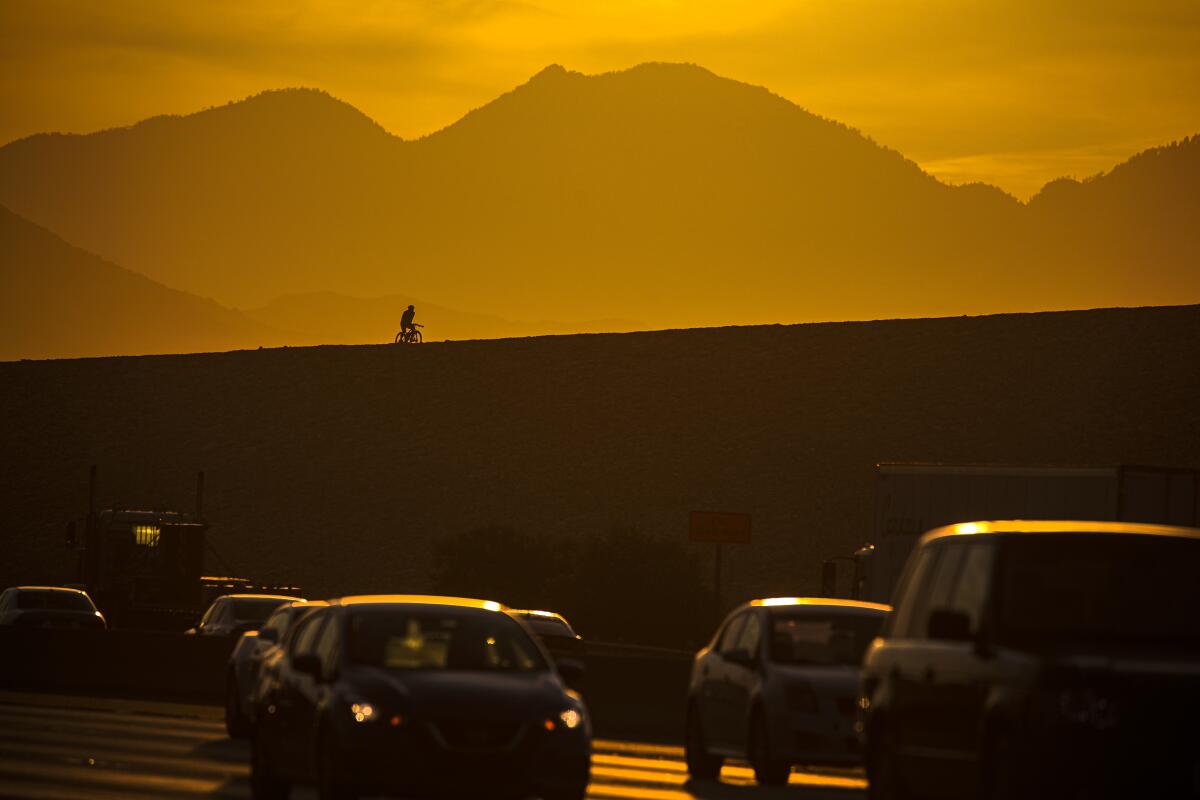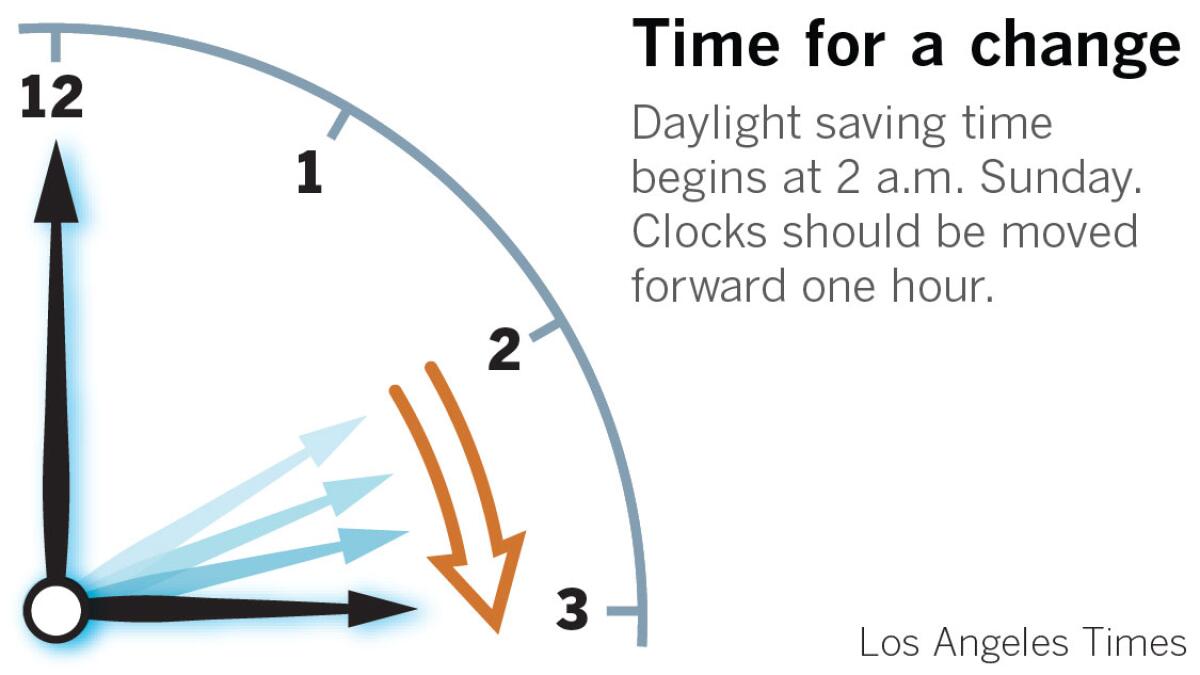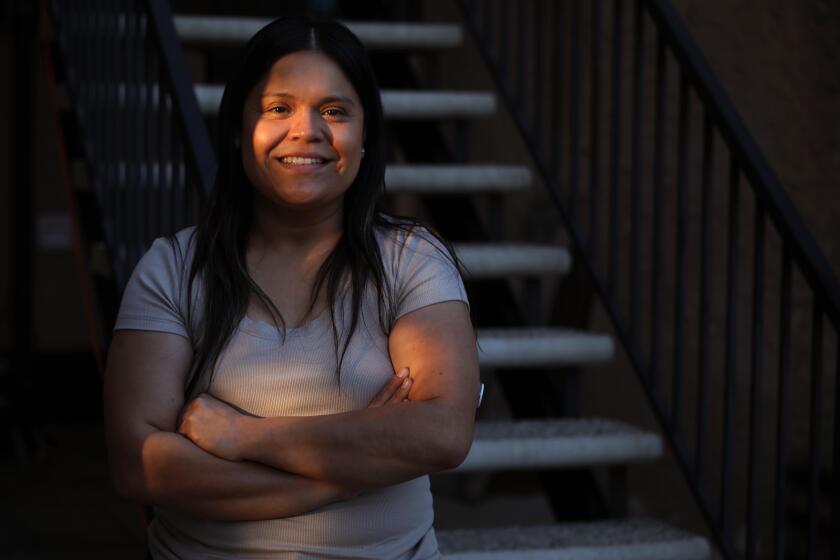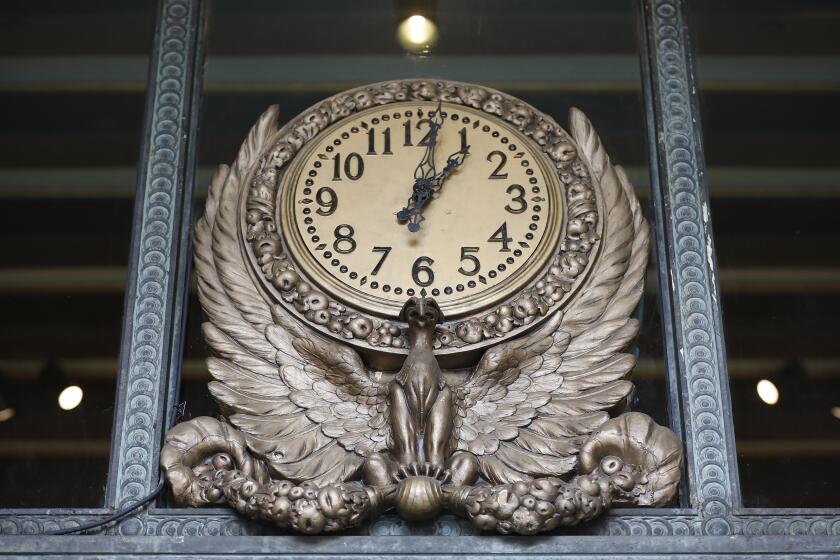Daylight saving time is coming Sunday. Get ready

Time travel is real, and people across the country practice it together two times every year— as the United States enters and exits daylight saving time.

Sunday, our digital clocks will automatically transport most Americans from 2 a.m. to 3 a.m., costing them an hour of sleep. Here’s everything you need to know about the history of daylight saving time and the push by some critics to get rid of it.
Where did daylight saving time come from?
Congress passed a law mandating the move to daylight saving time in March 1918, when the U.S. was trying to conserve fuel and energy for the war effort and shifted clocks forward to make use of natural sunlight into the evening. (Germany had done the same in 1916.) The public wasn’t so keen on the idea, so Congress passed another law over President Wilson’s veto to end the federal mandate in October 1920.
At President Franklin D. Roosevelt’s urging, Congress enacted a year-round version of daylight time in 1942, dubbed “war time.” Although that requirement elapsed in 1945, numerous states and cities adopted their own daylight-time mandates, creating inconsistencies that caused headaches for the transportation industry, the Congressional Research Service said in a 1998 report. Congress responded in 1966 with the Uniform Time Act, setting common start and ending dates for daylight saving across the country.
By the way, researchers have since found that daylight saving isn’t actually effective at conserving energy.
L.A. is among several cities nationwide that have adopted scheduling laws, part of a growing recognition that schedules are as important to well-being as wages and sick pay.
What are the pros and cons of daylight saving?
Today, observing daylight saving time is controversial, with arguments for and against. Public health experts have found that losing an hour of sleep increases the chances of having a heart attack or stroke, but criminologists have found that the extra hour of daylight in the evening can reduce crime rates. The effect on traffic safety is unclear. Sleepy drivers raise the likelihood of collisions, but having increased visibility on your evening commute home from work can lower it as well. And daylight time means more school days starting before the sun is fully up, drawing complaints from parents who don’t like their children having to walk to school in the dark.
JP Morgan Chase has found that daily credit- and debit-card spending goes up by 0.9% when daylight saving time starts and down by 3.5% when it ends. So some economists are in favor of daylight time because of the uptick in consumer spending during the time-shifted days. Meanwhile the American Academy of Sleep Medicine has called for the end of daylight time and encourages lawmakers to keep to standard time, as it aligns daylight hours better with the times that we normally wake up and go to bed.
What happens when you lose sleep?
Azizi A. Seixas, the associate director of the Center for Translational Sleep and Circadian Sciences at the University of Miami Miller School of Medicine, said chronic sleep deprivation has long-term consequences for your health, including higher risks of heart disease, Type 2 diabetes, obesity, Alzheimer’s and Parkinson’s disease.
The shift to daylight time causes sleep loss only once a year. But in the short term, he said, individuals can experience “impaired cognitive function,” weakened immune systems and disrupted circadian rhythms.
It’s time to turn your clocks back to observe standard time. Give us your take on the timeless time change debate.
What is circadian rhythm and why does it matter?
People’s circadian rhythms are like an internal clock that help regulate hormones, metabolism and emotional responses, Seixas said.
“Daylight exposure synchronizes our internal clock with the external environment, reinforcing our sleep-wake cycle,” he told The Times over email. Exposure to sunlight is crucial in signaling when it’s time to be alert and when it’s time to be asleep. He added that a lack of proper daylight exposure “disrupts the circadian rhythm, leading to sleep disturbances, mood disorders, and other health issues.”
Any policy on clock-shifting, Seixas said, needs to “balance the advantages of longer daylight hours with the potential negative effects on sleep and health.”
What are lawmakers trying to do about daylight saving?
The Uniform Time Act allowed states to make standard time permanent, getting rid of the semiannual time changes. Hawaii and Arizona don’t observe daylight time (although the Navajo Nation in northeastern Arizona does), nor do the U.S. territories of Puerto Rico, American Samoa, Guam, the U.S. Virgin Islands and Northern Mariana Islands.
You might remember that Proposition 7, which Californians approved in 2018, authorized state legislators to propose a shift to permanent daylight time. But as the proposition acknowledges, the state doesn’t have the power to make such a change unless Congress amends the Uniform Time Act.
On a federal level, Sen. Marco Rubio (R-Fla.) and a bipartisan group of co-sponsors proposed the Sunshine Protection Act to extend daylight time year-round. The bill passed the Senate unanimously in 2022 only to die in the House; the latest version and its House counterpart have yet to get a vote in either chamber.
The first ice-free days of the Arctic Ocean could occur as soon as the 2020s or 2030s — as many as 10 years earlier than previous projections.
What is the best way to get ready for daylight saving?
Seixas has a handy acronym he uses to help people prepare for the lost hour of sleep: SPRING.
- “S” is for “sunlight.” Being outdoors during the day helps your body stay alert until it’s actually time to go to bed.
- “P” is for “prepare for adjustment.” Go to bed earlier because you’re going to lose an hour of sleep, and make sure you don’t drink caffeine too late in the day.
- “R” is for “routine.” Try and create habits around bedtime that prepare you to sleep. Instead of watching television or scrolling through social media before bed, shut off your devices and read a book before rolling into your blankets.
- “I” is for “individualize.” Know your own body and figure out what works best for you.
- “N” is for “Nap only if tired, but earlier.” Try to nap earlier in the day and keep it short; napping longer than 30 minutes can leave some residual drowsiness that is harder to shake off.
- “G” is for “gradually ease into it.” In these days leading up to daylight time, try to incrementally sleep earlier and wake up earlier to get your body ready for the lost hour.
If you have pre-existing conditions and want to know how to curb the heightened risk of a stroke or heart attack, Dr. Hitinder Singh Gurm, a cardiologist and chief medical officer of the University of Michigan Health System, recommends a few extra steps besides getting adequate sleep. Gurm tells his patients to not smoke and to monitor their blood pressure, diabetes and cholesterol levels to ensure that they stay at safe levels. And of course, regular exercise is always recommended to help with long-term health issues.
More to Read
Sign up for Essential California
The most important California stories and recommendations in your inbox every morning.
You may occasionally receive promotional content from the Los Angeles Times.














